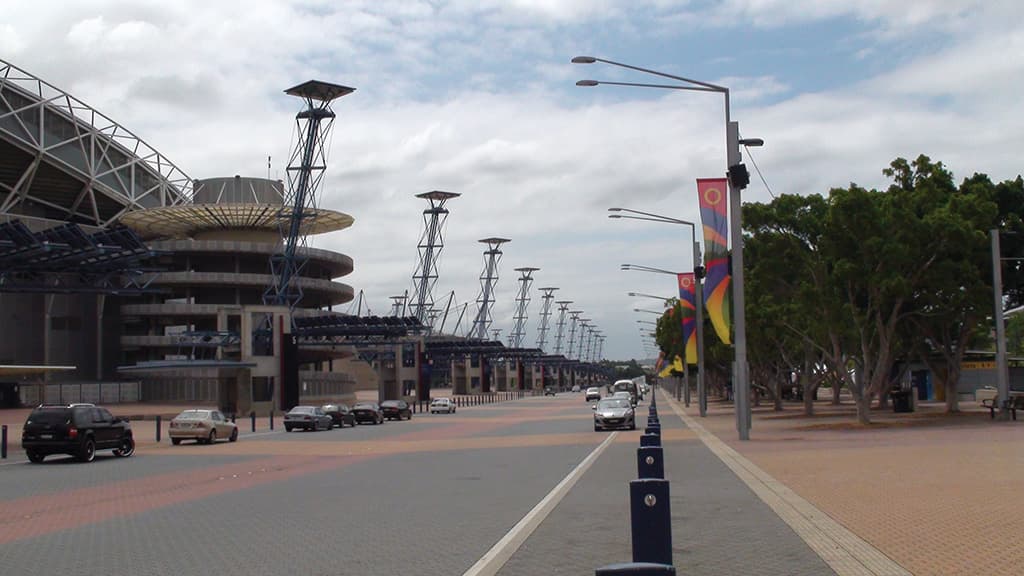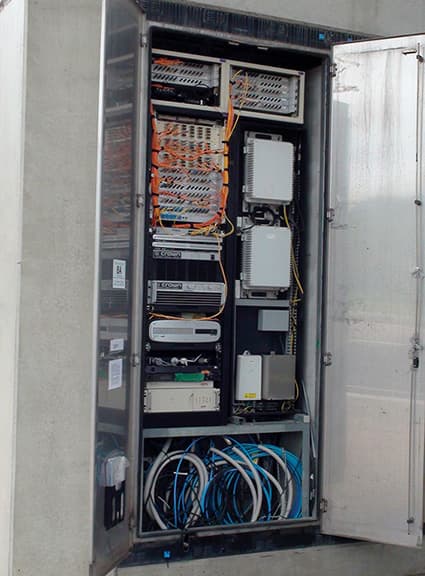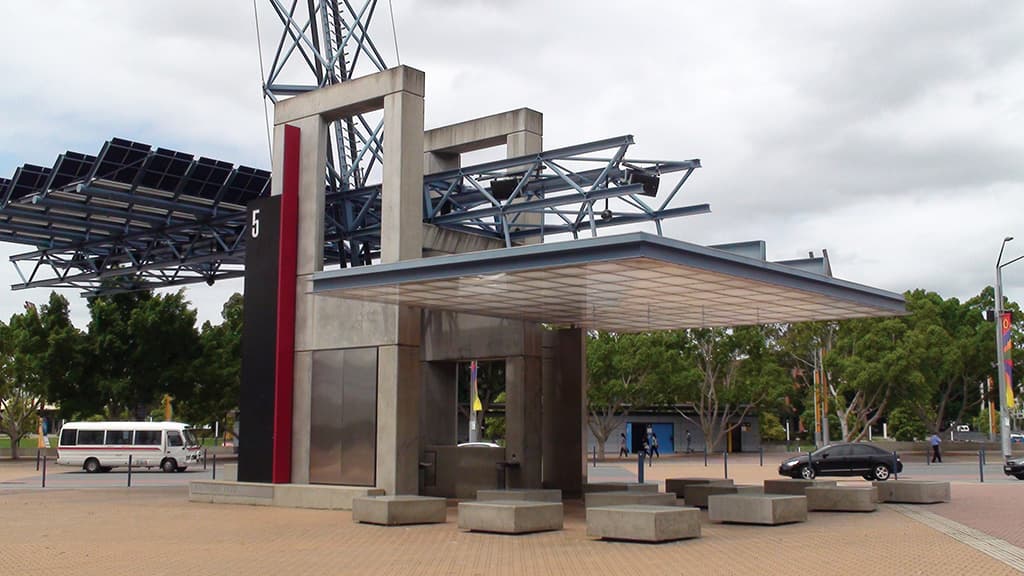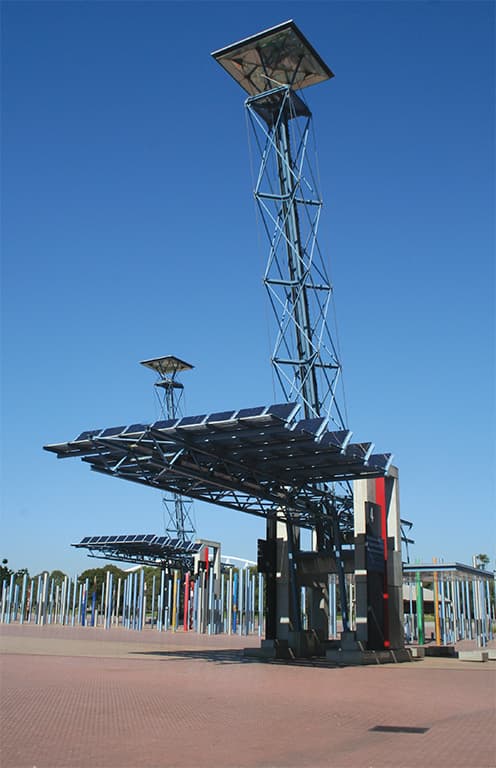
Walk In The Park
Biamp’s new Vocia makes light work of Sydney Olympic Park’s distributed PA and paging.
Text:\ Tim Stackpool
Images:\ Courtesy of The PA People
When designing a site-wide PA and paging system for a location that contains multiple Olympic size arenas, parking zones, public amenities and corporate function areas, you could be forgiven for throwing you hands in the air, tossing the toys out of the pram and walking off in a huff, claiming “it’s all too @#$%& difficult!” But with around 10 million people visiting Sydney Olympic Park each year, emphasis on crowd control and overall safety required that a comprehensive and effective system be developed and implemented to world class standards.
Local favourites, The PA People, was charged with the task, and after consultation with the client and a study of industry trends worldwide, opted for the then-fledgling, Biamp Vocia system. Described as a network-centric, decentralised multi-function audio system, Vocia was able to deliver advanced paging and public address services across large multi-zone systems. In this instance it provides “site-wide paging and message scheduling services for the Sydney Olympic Park precinct,” according to The PA People’s system engineer Damien Juhasz.
Back at the Biamp R&D facility in Brisbane, Vocia was developed to provide a solution for areas that was outside its traditional markets of conferencing and sound reinforcement. The goal was to bring a focused, but easy to deploy, system to the market. It needed to be simple to physically install while giving the customer a solution that was cost effective and extremely easy use. More complicated and higher-end features were developed due to the advent of stricter standards being expected with regard to ‘life safety requirements’. As such, a Vocia installation does away with the need for an occupant warning system to be separate from a venue’s public address systems. Vocia merges them into the one entity.
DISTRIBUTED ARCHITECTURE
Vocia achieves this through a decentralised architecture that distributes processing and page routing across the network, eliminating the potential for a single point of system failure. Vocia uses standard audio over IP technologies such as CobraNet to lower the cost and effort of implementing single-site systems, as well as existing IP networks for multi-site installations. But Vocia’s point of difference is the way in which it implements this technology. To overcome the traditional bandwidth limits of CobraNet, Vocia uses an event-driven architecture that allows for the channels to be opened and active during any particular event and then stripped off the network once complete. There is no need to set IP addresses or routing matrices.
Sounding complicated? Not really. All elements can be monitored for status and installation integrity and there is no need for individual addressing of components. Each device is given an ID that is ‘dialled-in’ on the physical hardware and is simply detected once attached. The Vocia network then begins to tell the device what its role is and sends it the appropriate configuration. The obvious advantage? Field replacement of components is possible by personnel who are not specifically trained in the gear. Kind of like plugging in a phone.
All non-emergency devices are powered via PoE (Power over Ethernet) technology using industry standard switching hardware. In the event of an emergency, all non-essential devices are locked out of the network and any life safety and control interfaces, along with amplifiers and emergency call stations, remain active. In the unforeseen event that everything goes pear-shaped, all emergency messages are physically stored within the amplifier, and can be played directly to the attached venue speakers. That’s clever.

SYSTEM DESIGN
Sydney Olympic Park is the first-ever Vocia installation worldwide. Here’s how it came together: The heart of the system is one networked Vocia Message Server (MS-1), which supports global paging, message playback, event scheduling, the VoIP paging interface, logging, remote access, inter-world paging and communications; all via TCP/IP.
For voice paging, the system uses five Desk Station 4 (DS-4) desktop networked paging stations, each offering four user-configurable page codes, and two Desk Station 10 (DS-10) units which allow up to 999 page codes. The system utilises four six-channel Vocia Input (VI-6) expansion devices to input analogue audio sources into the Vocia system for use as background music.
The paging zones of the system are supplied audio by a combination of 11 Vocia Output (VO-4) units that convert four channels of digital audio input into line-level analogue audio outputs or 21 networked multichannel Vocia Amplifiers (VA-8600). Each amplifier is capable of providing eight channels of modular amplification with up to 2.4kW of power per chassis, with an optional channel-to-channel or device-to device fail over. Installed in these 21 amplifiers is a total of 62 AM-600 amplifier cards. Each amplifier is capable of housing up to eight AM-600 amplification modules with capabilities of 100W to 600W per module and a maximum of 2.4kW per VA-8600 chassis. The AM-600 amplifier modules offer software configurable power levels and load options and the ability to select either direct drive at 70V or 100V, or low-impedance (4Ω or 8Ω) operation.
This equipment is spread across the site at remote pylon and node rack locations that service adjoining speaker zones, all connected via a 1Gbps optical fibre network. Each location contains a combination of VA-8600s, VO-4s and VI-6s, depending on the requirements of the local audio zones serviced by the node or pylon. Some pylons and nodes also contain a VI-6 to enable the input of field background music sources and radio microphones around the site, while other nodes also contain DS-4 paging microphones.


WORKING THE CROWD
“The Vocia system provides a very comprehensive set of DSP processing capabilities in each of the input and output devices of the system,” Damien Juhasz told AV. “We were able to use these tools to produce a system that delivers speech reproduction with a high level of intelligibility and music reproduction that has good spectral balance and clarity. Also the distributed nature of the Vocia system made testing and commissioning very easy on such a large site.”
In short, the Vocia system enables staff at Sydney Olympic Park to easily page to any location across the site. Using the Vocia software application, they are also able to centrally manage the Vocia system for the entire site, making it possible to route global background music sources, record and schedule messages, customise paging configurations and monitor the status of all Vocia equipment.
Additional features of the system include text-to-speech converters to allow for multilingual announcements to be generated on the fly. As mentioned, powerful amounts of digital signal processing such as dynamics, equalisation, filters, crossovers and delay, allow for the design of highly intelligible acoustic spaces, assisting with meeting the more stringent requirements for speech intelligibility. Vocia’s ambient noise compensation algorithms and hardware also rate a mention, where the system very accurately adjusts amplifier output according to sampled ambient levels without requiring any gap in the program audio.
“Our aim was to design a site-wide paging system that was extremely reliable and fault tolerant,” said Juhasz. “Also the new system needed to be able to deliver the flexibility of the original site-wide paging system without the complexity.” But given the massive scale of the Sydney Olympic Park installation (near to 10 square kilometres), at its core Vocia remains a scalable system because every component contains memory and processing resources that communicate intelligently across the network.
Although the installation is not classed as a life safety system design, because the site was the first public installation of the Vocia system anywhere in the world, the deployment and design has set the benchmark. For the user, the installation at Sydney Olympic Park appears to have ticked all the boxes. According to Dominic Langan, the site’s manager for safety and security: “The system is extremely easy to use, very user friendly,” he said. “It meets all of our requirements.”
There are now several other deployments of Vocia at notable international sites, in various configurations, including airports in the US, India, New Zealand and Hong Kong. A number of prominent hospitals around the world also use Vocia. Closer to home, The PA People is currently in the process of installations at Taronga Zoo in Sydney and Carrara Stadium on the Gold Coast.
















RESPONSES